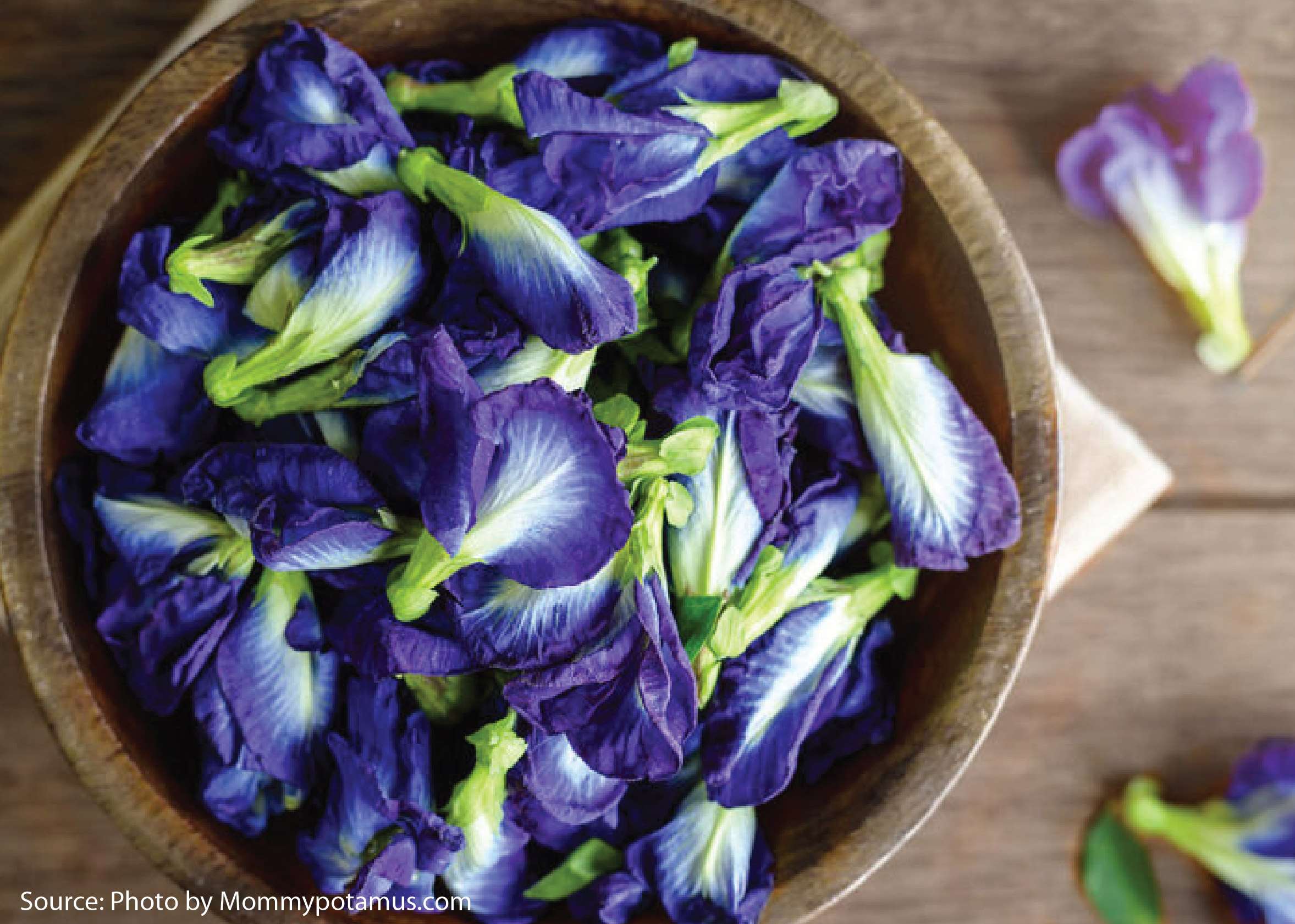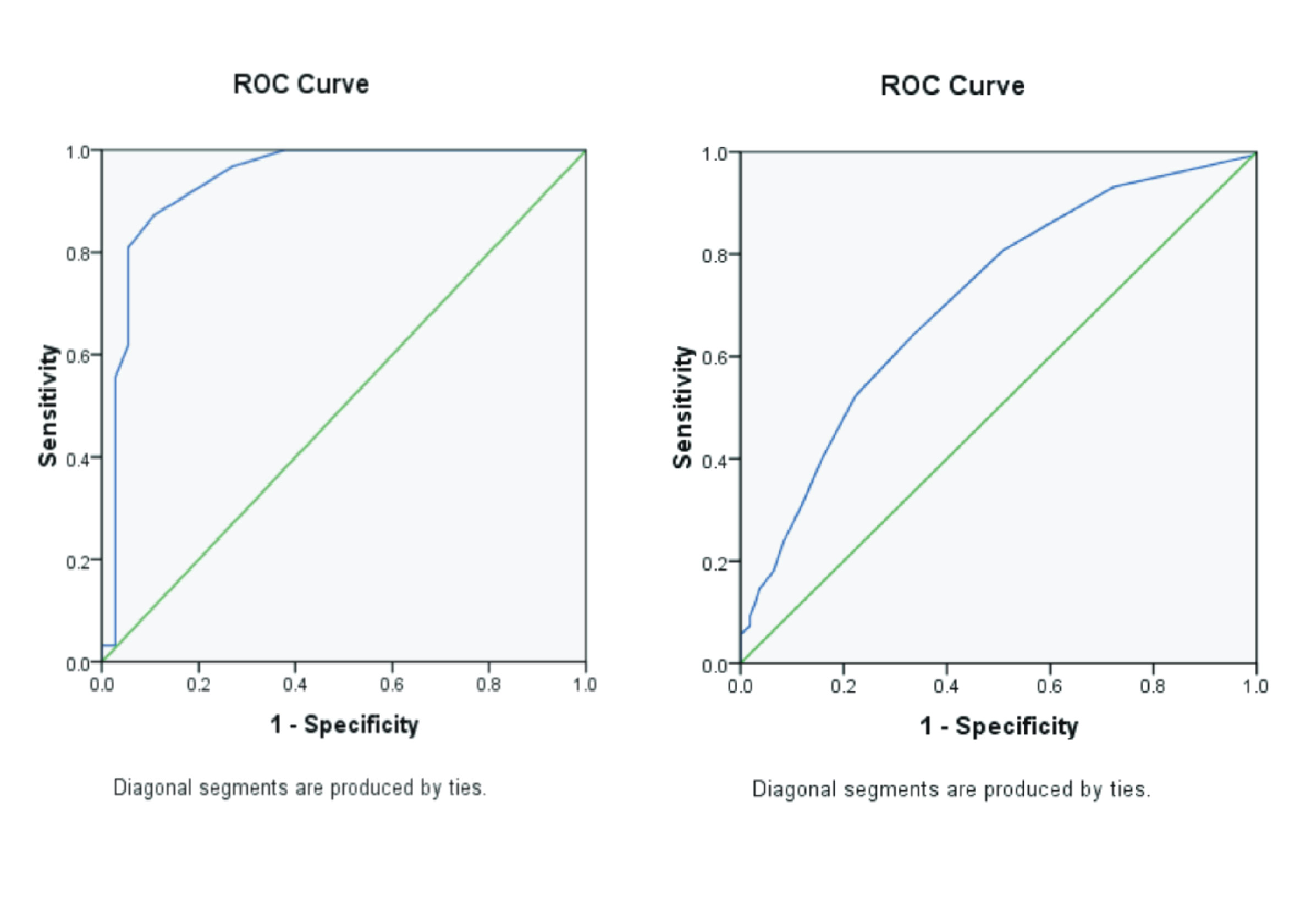ANTIBACTERIAL ACTIVITY OF FOOT SPRAY OF TELANG FLOWER EXTRACT AND COFFEE GROUNDS

Background: Foot odor is a problem that often occurs, one of the causes being the Staphylococcus aureus bacteria which contaminates sweaty feet and dirty shoes. Foot spray can be used to reduce foot odor. Telang flowers (butterfly pea) and coffee grounds can be formulated in foot spray to reduce foot odor because they have a distinctive aroma and contain flavonoid compounds as antibacterials. Purpose: This research aims to determine the antibacterial activity of foot spray using telang flower extract and coffee grounds against Staphylococcus aureus. Method: The research was conducted using the disc diffusion method. Foot spray was made in three formulas with varying concentrations of telang flowers and coffee grounds, namely I (0.5 : 0.125), II (1 : 0.25), and III (2 : 0.50). Result: The test results of three formulas showed yellow, orange and brownish purple colors, a distinctive odor of menthol, pH 4.54 - 4.56, viscosity 4.00 – 6.00 Cp and dry time 1 minute 1 second – 1 minute 53 seconds. The antibacterial activity test showed that foot spray had antibacterial activity against Staphylococcus aureus with the diameter of the inhibition zone in Formulas I and II in the medium category, while in III it was in the strong category. This shows that the higher the concentration of telang flowers and coffee grounds, the greater the antibacterial activity. Conclusion: Foot spray made from telang flower extract and coffee grounds could reduce foot odor by inhibiting the growth of Staphylococcus aureus bacteria.
Introduction
Dense daily routines make people sweat during activities (Ekawarna, 2021(Ekawarna, 2021)). One part of the body that often experiences sweating with more frequency and to a greater degree is the feet because that part is often covered by the use of socks and shoes (Hajar et al., 2022(Hajar et al., 2022)). The closed condition of the feet, supported by high or hot temperatures, can be a factor in causing foot problems, one of which is bad odor or foot odor (Ashfia et al., 2019(Ashfia et al., 2019)). Foot odor can arise due to sweat mixed with bacteria (Setiawan and Suling, 2018(Setiawan & Suling, 2018); Vernanda et al., 2023(Vernanda et al., 2023)) includingCorynebacteriumacne,Pseudomonas aeruginosa,Staphylococcus epidermidis,Staphylococcus aureus, andStreptococcuspyogenesis (Primono, 2019(Primono, 2019)).
A foot spray can be used as a solution because it dries faster and is more practical (Amananti and Dairoh, 2020(Amananti & Dairoh, 2020); Riyanta et al., 2020(Riyanta et al., 2020); Rumanasen, 2022(Rumanasen, 2022)). Foot spray typically contains 62% ethanol, a softener, and moisturizer (Ashfia et al., 2019(Ashfia et al., 2019)). The active ingredient is alcohol as an antimicrobial agent because it is most effective against bacteria (Hutapea and Musfiroh, 2021(Hutapea & Musfiroh, 2021)). Excessive consumption of alcohol and chemicals can be harmful to health and can cause skin irritation (Kurniawidjaja et al., 2021(Kurniawidjaja et al., 2021)). Therefore, its use should be limited by adding active ingredients from natural ingredients that can have antibacterial properties. The natural ingredients are coffee grounds and telang flowers (Ashfia et al., 2019(Ashfia et al., 2019)).
Telang flower (Clitoria ternateae L.) can be used as traditional medicine. According to Styawan and Rohmanti (2020)(Styawan & Rohmanti, 2020), flavonoids and alkaloids from the telang flower plant have the potential as antibacterial (Zahara, 2022(Zahara, 2022)). The antimicrobial activity of methanol extracts was carried out on bacteria, yeast, and fungi (Febrianti et al., 2022(Febrianti et al., 2022)). The pharmacological potential of telang flowers includes antibacterial, antioxidant, anti-inflammatory, antihistamine, antidiabetic, antiparasitic, anticancer and, immunomodulatory (Pangondian et al., 2023(Pangondian et al., 2023)). Coffee is a brewed drink that is well-known to the public. When coffee is processed into a beverage, usually the waste produced is in the form of coffee grounds. The remaining coffee grounds still contain ingredients such as caffeine, organic acids, and antioxidants, although not as much as pure coffee grounds (Faesi et al., 2020(Faesi et al., 2020); Rochmah et al., 2021(Rochmah et al., 2021)), and the aroma of coffee grounds can be used to remove unpleasant odors because it has a distinctive odor (Primono, 2019(Primono, 2019)). Coffee also has detoxification properties, removes mosquito scars/bites, improves blood circulation, increases skin metabolism, and makes skin healthier and stronger (Limantara et al., 2019(Limantara et al., 2019); Iriondo-DeHond et al., 2020(Iriondo-DeHond et al., 2020); Michalak et al., 2021(Michalak et al., 2021)). Based on the above background, the researcher conducted a study entitled antibacterial activity of foot spray preparations of telang flower extract and coffee grounds, with the aim of knowing the physical quality and antibacterial activity of foot spray againstStaphylococcus aureus.
Material and Method
The type of research is laboratory experimental. This research describes the results of physical quality evaluations which include organoleptic tests, pH tests, viscosity tests, dry time tests, and antibacterial activity test results for foot spray preparations of telang flower extract and coffee grounds. The independent variable in this research is the variation in concentration of telang flower extract and coffee grounds in the foot spray preparation of butterfly telang extract and coffee grounds, while the dependent variable is the inhibition zone formed and physical quality evaluation. Positive and negative controls are used in antibacterial tests, to compare the antibacterial activity of foot spray against standard antibiotics (positive control) and substances that do not contain antibacterial activity (negative control).
Materials
The research materials include robusta coffee, pure culture ofS.aureusbacteria, telang flower, coffee grounds, ethanol 96% (pharmaceutical grade), ascorbic acid, glycerin, isopropyl alcohol, menthol, propylene glycol, carbopol 940, NaOH, Tween 80, aquadest, muller hinton agar (Oxoid), NaCl 0.9%, chloramphenicol 1% (Kalmicetine), paper, cotton, disc paper, filter paper, and rubber bands. Research tools include beaker glass (Pyrex), test tube (Pyrex), petri dish (Pyrex), evaporation dish, sterile paper disc, stirring rod, ose, bunsen, oven, blender, autoclave, maceration vessel, brown vessel, rotary evaporator, waterbath, stirrer, pH meter, brookfield viscometer, erlenmeyer, hot plate, autoclave (Hirayama), LAF, tweezers, paper disk, and analytical balance (Labex).
Method
This research was carried out in several stages of implementation including extraction by maceration method, making foot spray formula, organoleptic test, pH test, viscosity test, dry time test, and antibacterial activity test from foot spray preparations of telang flower extract and coffee grounds. Descriptive analysis of the results was used to see whether the foot spray had good physical quality and antibacterial activity as an antibacterial against Staphylococcus aureus bacteria and for butterfly pea flower extraction, 400 grams of telang flower simplicia powder were put into a vessel. Then, 3.000 mL of 70% ethanol solvent was added in a ratio of 1 : 7.5, soaked for two days, stirring occasionally, stored in a dark place protected from sunlight,
Afifah, H.N., Sulistiarini, R., Badawi, S., 2022. Optimasi Basis Foot spray Sebagai Alternatif Bahan Dasar Antibakteri Kaki. Proceeding of Mulawarman Pharmaceuticals Conferences Vol. 15, Pp. 84–88.
Amananti, W., Dairoh, 2020. Aktifitas Antibakteri dari Sediaan Foot Sanitizer Spray Kombinasi Ekstrak Biji Kopi (Coffea) dan Rimpang Jahe (Zingiber officinale). Jurnal Ilmiah Manuntung Vol. 6, Pp. 323–330.
Amelia, N.A., 2021. Pengaruh Variasi Konsentrasi Karbopol 940 Terhadap Stabilitas Formulasi Nanopartikel Spray Gel Ekstrak Tanaman Bundung (Actinoscirpus Grossus) (Skripsi). Universitas Sari Mulia, Program Studi Sarjana Farmasi Fakultas Kesehatan.
Ashfia, F., Adriane, F., Puspita Sari, D., Rusmini, R., 2019. Formulasi dan Uji Aktivitas Antibakteri Sediaan Foot spray Anti Bau Kaki yang Mengandung Ekstak Kulit Jeruk Nipis dan Ampas Kop. Indonesian Chemistry and Application Journal Vol. 3(1), Pp. 28.
Aznury, M., Sofiah, Sari, R.P., 2020. Produk Gel Hand Sanitizer Berbahan Dasar Ekstrak Cair Daun Sirih Hijau (Piper Betle Linn.) sebagai Antiseptik. KINETIKA Vol. 11(1), Pp. 27-35.
Ekawarna, 2021. Manajemen Konflik dan Stres. Bumi Aksara, Jakarta.
Faesi, C.N., Darma, G.C.E., Priani, S.E., 2020. Studi Literatur Pengembangan Sediaan Lip Scrub Mengandung Ekstrak dan Ampas Kopi (Cofffea arabica L). Prosiding Farmasi Vol. 6(2), Pp. 418-423.
Febrianti, F., Widyasanti, A., Nurhasanah, S., 2022. Aktivitas Antibakteri Ekstrak Bunga Telang (Clitoria ternatea L.) terhadap Bakteri Patogen. ALCHEMY Jurnal Penelitian Kimia Vol. 18(2), Pp. 234-241.
Hajar, S., Andasari, C.A., Rio, S., Lestari, W., 2022. Risiko Akibat Pemakain Sepatu Boots pada Pencari Tiram. Jurnal Kedokteran Syiah Kuala Vol. 22(2), Pp. 31-37.
Hutapea, E.E., Musfiroh, I., 2021. Artikel Tinjauan: Sistem Kualifikasi Operator di Industri Farmasi. Farmaka Vol. 19(4), Pp. 53-59.
Iriondo-DeHond, A., Uranga, J.A., Del Castillo, M.D., Abalo, R., 2020. Effects of Coffee and Its Components on the Gastrointestinal Tract and the Brain-Gut Axis. Nutrients Vol. 13(1), Pp. 88.
Jamilatun, M., Aminah, A., Shufiyani, S., 2020. Uji Daya Hambat Antibakteri Kapang Endofit dari Tanaman Alang-Alang (Imperata Cylindrica (L.) BEAUV.) terhadap Pertumbuhan Bakteri Staphylococcus Aureus dan Escherichia Coli. Jurnal Medikes (Media Informasi Kesehatan) Vol. 7(2), Pp. 335-346.
Jamilatun, M., Andiva, H.A., Lukito, P.I., 2023a. Formulasi dan Evaluasi Sabun Cair Kombinasi Ekstrak Kulit Nanas Madu (Ananas comosus (L) Merr .) dan Gel Lidah Buaya (Aloe vera (L) Webb .). Jurnal Jamu Kusuma Vol. 3(1), Pp. 35-41.
Jamilatun, M., Rahmadianty, H., Lukito, P., 2023b. Quality Analysis of Cream Scrub Combination of Moringa (Moringa Oleifera) Leaf Extract and White Glutinous Rice ( Oryza Sativa Glutinosa ) Starch. International Journal of Multidisciplinary Approach Research and Science Vol. 1(3), Pp. 302-311.
Kurniawidjaja, M., Lestari, F., Tejamaya, M., 2021. Konsep Dasar Toksikologi Industri. Fakultas Kesehatan Masyarakat Universitas Indonesia., Depok.
Limantara, J., Tedjokoesoemo, P.E.D., Rizqy, M.T., 2019. Penggunaan Ampas Kopi Sebagai Material Alternatif pada Produk Interior. Intra Vol. 7(2), Pp. 846-849.
Maulid, S, Hanung S. J., 2021. Uji Antibakteri Ekstrak Bunga Telang (Clitorea ternatea L.) terhadap Staphylococcus aureus Vol. 13(1).
Michalak, M., Pierzak, M., Kręcisz, B., Suliga, E., 2021. Bioactive Compounds for Skin Health: A Review. Nutrients Vol. 13(1), Pp. 203.
Pangondian, A., Rambe, R., Umaya, C., Athaillah, A., Jambak, K., 2023. Potensi Ekstrak Bunga Telang (Clitorea Ternatea L .) terhadap Antidiabetes pada Mencit Putih Jantan ( Mus Musculus ). Forte Journal Vol. 3(2), 150–157.
Primono, S., 2019. Pemanfaatan Ekstrak Ampas Kopi dan Daun Gugur Ketapang sebagai Foot-Spray Anti Bau Kaki.
Riyanta, A.B., Febriyanti, R., Barlian, A.A., Santoso, J., Purwantiningrum, H., 2020. Pemanfaatan Biji Kopi Sebagai Sediaan Footsanitizer Untuk Menambah Pengetahuan Kesehatan pada Siswa di SMK Karya Medika Ketanggungan Kabupaten Brebes. Jurnal Abdimas PHB : Jurnal Pengabdian Masyarakat Progresif Humanis Brainstorming Vol. 3(2), Pp. 41-45.
Robiatun, R., Pangondian, A., Paramitha, R., Rani, Z., Gultom, E., 2022. Formulation and Evaluation of Hand Sanitizer Gel From Clove Flower Extract (Eugenia aromatica L.). International Journal of Science, Technology & Management Vol. 3(2), Pp. 484-491.
Rochmah, H.F., Kresnanda, A.S., Asyidiq, M.L., 2021. Pemanfaatan Limbah Ampas Kopi sebagai Upaya Pemberdayaan Petani Kopi di CV Frinsa Agrolestari, Bandung, Jawa Barat. 1 Vol. 11(2), Pp. 60-69.
Rumanasen, A., 2022. Formulasi dan Uji Stabilitas Fisik Face Mist Mengandung Ekstrak Etanol 70 % Buah Mentimun (C Ucumis Sativus L .) sebagai Antioksidan (Skripsi). Universitas 17 Agustus 1945 Jakarta, Program Studi Ilmu Farmasi Fakultas Farmasi.
Setiawan, S., Suling, P., 2018. Gangguan Kelenjar Keringat Apokrin: Bromhidrosis dan Kromhidrosis. Jurnal Biomedik (JBM) Vol. 10(2).
Styawan, A., Rohmanti, G., 2020. Determination of Flavonoid Levels of AlCl3 Methode in The Extract of Metanol Flowers (Clitoria Ternatea L.). Jurnal Farmasi Sains dan Praktis Vol. 6(2), Pp. 134-141.
Tsabitah, A.F., Zulkarnain, A.K., Wahyuningsih, M.S.H., Nugrahaningsih, D.A.A., 2020. Optimasi Carbomer, Propilen Glikol, dan Trietanolamin dalam Formulasi Sediaan Gel Ekstrak Etanol Daun Kembang Bulan (Tithonia diversifolia). Majalah Farmaseutik Vol. 16(2), Pp. 111-118.
Vernanda, R.Y., Ariyanti, A.D., Oktaviana, C., Gunawan, F.S., Prastica, Y.M.V., Mauryn, F.R., Rati, A.K., Hasfayo, F.P., Ribeiro, M.V., 2023. Isolasi dan Identifikasi Bakteri Penyebab Bau Kaki. Jurnal Farmasi Sains dan Terapan (Journal of Pharmacy Science and Practice) Vol. 10(1), Pp. 14-24.
Yaqin, M.A., 2016. Pengaruh Ekstrak Kopi Robusta (Coffea robusta) sebagai Penghambat Pertumbuhan Staphylococcus aureus | PDF (Skripsi). Universitas Nusantara Perstauan Guru Republik Indonesia.
Zahara, M., 2022. Ulasan Singkat: Deskripsi Kembang Telang (Clitoria ternatea L.) dan Manfaatnya. Jurnal Jeumpa Vol. 9(2), Pp. 719-728.
Copyright (c) 2025 Journal of Vocational Health Studies

This work is licensed under a Creative Commons Attribution-NonCommercial-ShareAlike 4.0 International License.
- The authors agree to transfer the transfer copyright of the article to the Journal of Vocational Health Studies (JVHS) effective if and when the paper is accepted for publication.
- Legal formal aspect of journal publication accessibility refers to Creative Commons Attribution-NonCommercial-ShareAlike (CC BY-NC-SA), implies that publication can be used for non-commercial purposes in its original form.
- Every publications (printed/electronic) are open access for educational purposes, research, and library. Other that the aims mentioned above, editorial board is not responsible for copyright violation.
Journal of Vocational Health Studies is licensed under a Creative Commons Attribution-NonCommercial-ShareAlike 4.0 International License














































